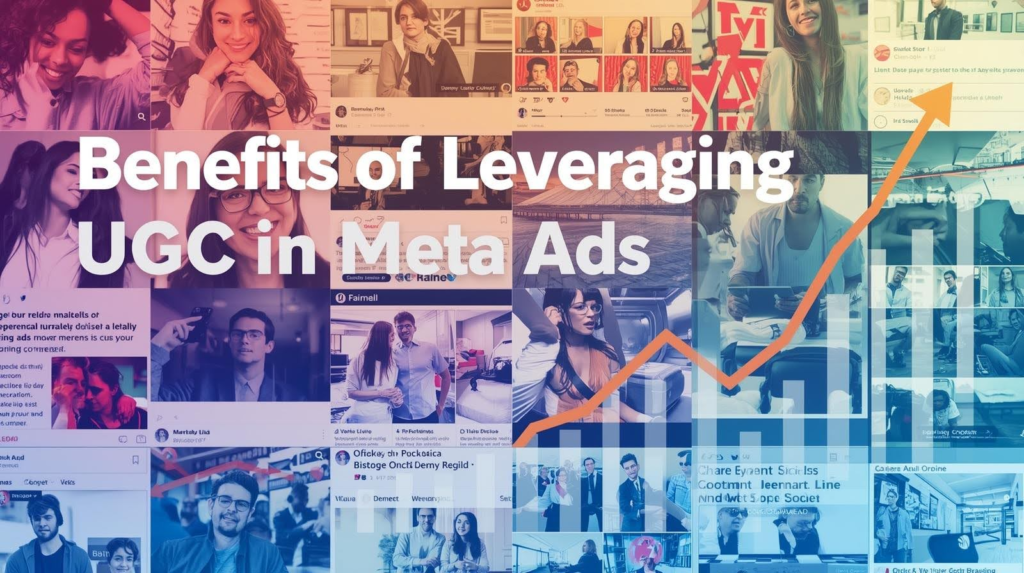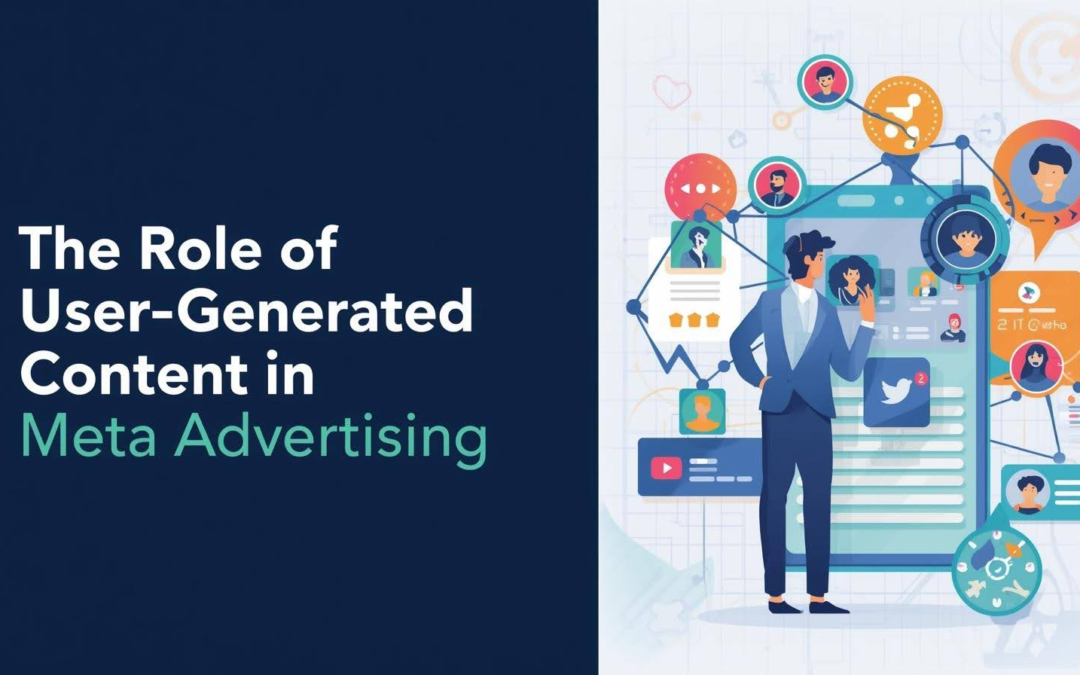Every brand wants attention, but not every message breaks through the noise. People have learned to skip, mute, or scroll past polished ads that feel too staged. What they stop for, instead, is real content—something that feels relatable and trustworthy. That is where user-generated content, or UGC, steps into the spotlight.
Meta platforms like Facebook and Instagram were built on people sharing personal stories, photos, and opinions. When brands harness that same authentic voice through UGC, they’re not just running ads—they’re joining the conversation in a way that feels natural. Reviews, unboxing videos, hashtags, and reels all count as UGC, and they have become some of the most persuasive tools in Meta advertising today.
The real power of UGC lies in its ability to blend authenticity, relatability, and reach. It doesn’t replace traditional advertising, but it enhances it by putting real experiences at the center. Let’s explore how UGC has reshaped Meta advertising, why it works so well, and how you can use it to grow your brand.
Key Points of the Article
User-generated content (UGC) has become central to Meta advertising because it brings authenticity, trust, and relatability.
UGC comes in many forms—reviews, unboxing videos, reels, comments, and collaborations—and outperforms traditional polished ads in building credibility.
Meta’s algorithm favors high-engagement, authentic content, making UGC highly effective in campaigns.
UGC drives higher click-through rates, lowers ad costs, and strengthens customer loyalty.
Brands can source UGC through hashtags, contests, micro-influencer partnerships, and community engagement.
Best practices involve balancing authenticity with branding, using proper permissions, and tracking metrics like CTR, ROI, and sentiment analysis.
While challenges exist—such as copyright concerns and inconsistent quality—UGC is set to dominate the future of Meta ads, especially with short-form content and AI integration.
Businesses, whether small or large, can start using UGC today to make their Meta advertising more impactful and cost-effective.
Understanding User-Generated Content (UGC)
User-generated content refers to any type of content created by real people rather than the brand itself. On Meta platforms, this can include Facebook posts, Instagram reels, Messenger testimonials, or even WhatsApp status updates that feature a product.
Different forms of UGC carry different strengths. A detailed product review adds depth, while a short reel shows energy and spontaneity. Unboxing videos reveal product quality, while community-driven posts create belonging. Memes and hashtag challenges spread fast, often turning into cultural moments.
The main difference between UGC and traditional brand content is ownership of the voice. Traditional ads come from the company; UGC comes from customers or community members. The tone feels different, and people pick up on that difference quickly.
Why UGC Matters in Meta Advertising
The shift toward UGC-driven advertising comes down to trust. Studies show that people trust peer recommendations far more than brand messaging. An unpolished selfie review can feel more persuasive than a glossy studio shot because it reflects genuine experience.
This authenticity builds social proof, a psychological trigger that convinces others to follow suit when they see peers engaging with a product. The credibility is baked in because the endorsement comes from someone who doesn’t benefit directly from the sale.
UGC also sparks higher engagement. People respond to content that mirrors their own lives, so they like, comment, and share it more readily. On top of that, brands save on costs by reusing authentic customer content instead of investing in expensive ad production.
The Role of UGC in Meta Advertising Campaigns
Meta’s advertising system is designed to reward engagement. Ads that generate more likes, comments, and shares get better placement and lower costs. UGC naturally fits this model because it sparks genuine interaction.
Brands can run UGC across different formats—carousel ads that showcase customer photos, story ads featuring real-life testimonials, or reels that highlight product experiences. Each format allows UGC to flow into the user experience without disrupting it.
Consider a case study: Gymshark, the fitness brand, built campaigns around customer transformation stories. By highlighting real results shared by real people, they drove higher conversion rates and stronger community growth than traditional ads ever could.
UGC also strengthens targeting and retargeting efforts. A customer who sees peers using a product feels more inclined to trust it. When they are retargeted with similar UGC ads, the cycle of trust and action deepens.
Benefits of Leveraging UGC in Meta Ads

The most obvious benefit is a higher click-through rate. People stop to watch or read content that feels real. This relevance lowers cost per click and raises ad performance.
Beyond performance metrics, UGC builds loyalty. Customers who see others sharing content about a brand are more likely to join that community. That sense of belonging translates into repeat engagement and purchases.
UGC also carries viral potential. A single customer video can spread widely if it resonates with audiences, giving brands exposure without added spending. More importantly, it humanizes the brand, showing that it listens and values real voices.
How to Source & Curate UGC for Meta Ads
The best UGC often comes from encouraging customers to share their experiences. Brands can run hashtag challenges, invite reviews, or create contests that prompt people to post about their products.
Partnering with micro-influencers is another approach. Unlike celebrities, micro-influencers feel more relatable and often create content that blends naturally with UGC.
However, sourcing UGC requires care. Brands must ask for permission before using someone’s post in an ad. Clear agreements prevent legal issues and maintain trust. Tools like Bazaarvoice or TINT can help collect and manage UGC at scale.
UGC Ad Creation: Best Practices
Blending UGC with branding is a delicate balance. Too much editing makes it feel staged, while too little may weaken clarity. The goal is to maintain authenticity while ensuring the message is clear.
Selecting the right format is crucial. A reel works well for showing quick results, while a testimonial suits a longer-form campaign. Testing different formats through A/B experiments helps identify what works best for each audience.
Above all, the editing process should respect the original tone. Audiences can sense when UGC feels forced, and that breaks trust.
Measuring the Impact of UGC in Meta Advertising
Measurement ensures that UGC is not just authentic but also effective. Brands should track engagement rates, click-through rates, conversion rates, and overall return on investment.
Sentiment analysis also matters. Positive comments indicate that the UGC resonates, while negative feedback highlights areas for improvement. Comparing performance between UGC and brand-created ads helps refine future campaigns.
Challenges & Pitfalls of Using UGC
Not all user content will meet brand standards. Some may lack quality, carry bias, or even show the product in an unfavorable light.
Copyright issues pose another challenge. Brands need explicit rights to use UGC, or they risk damaging both reputation and legal standing.
There’s also the risk of over-relying on UGC without moderation. Without balance, campaigns can feel inconsistent or lose focus on brand identity.
The Future of UGC in Meta Advertising
Looking ahead, UGC will only grow in importance. The rise of AI tools means brands may see synthetic UGC enter the mix, though authenticity will remain the deciding factor.
Short-form UGC, like reels and TikTok-style videos, will dominate as younger audiences prefer bite-sized content. Gen Z and Gen Alpha, in particular, value relatability over perfection, making UGC-driven advertising even more powerful.
Meta itself is likely to evolve its platform to support UGC-first advertising strategies, giving brands more tools to harness community voices.
Actionable Tips for Marketers

If you’re just starting, begin by encouraging customers to share their experiences on social platforms. Even a handful of posts can be repurposed into ads.
As you grow, create structured campaigns with clear incentives for users to contribute content. Seek micro-influencers who align with your values and audience.
For experts, scaling UGC means investing in tools to manage permissions, test performance, and integrate UGC into every stage of the funnel. A simple checklist can keep campaigns focused: source UGC, verify permissions, edit lightly, test formats, and track outcomes.
Conclusion
User-generated content has become a cornerstone of Meta advertising, not a passing trend. It brings authenticity, relatability, and trust to a space often dominated by polished ads. UGC empowers brands to build communities, lower ad costs, and reach audiences in ways that feel natural.
The key is balance—authentic voices supported by smart strategy. Brands that embrace UGC today will be better prepared for the future of Meta advertising, where authenticity wins attention.
Now is the time to start. Even a small step—sharing one customer’s story—can begin a cycle of trust that scales into real growth. At Technology Castle, we help brands harness UGC to transform their advertising. Start small, act now, and build campaigns that people want to see.

